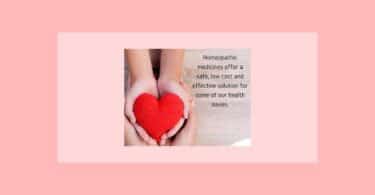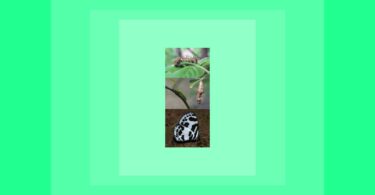This work discusses Masi Elizade’s philosophy (Aristotelic-Thomist), its relation to Aristotle’s concepts of virtue, vice and mean (moderation) and the practical application of all this.
There is a view of man, disease and cure present in Hahnemann’s work, which is similar to the Aristotelic concept of man as described by Tomás de Aquino some centuries later. Our source materials to explain this were : the Actas del Instituto Internacional de Altos Estúdios Homeopáticos James Tyler Kent[3], Organon[4] by Hahnemann and Nicomachean Ethics by Aristotle. Those works allowed a deeper comprehension of the role of the Aristotelic philosophy in the homeopathic Aristotelic-Tomist conception in Hahnemann.
Masi Elizalde introduces the concept of Miasmatic Dynamics, which involves the suffering of patients and their respective reactions. With this view we can prescribe the remedy and follow the evolution of the patient. This allows an evaluation of primary psora and whether it is active or latent.
With his method, Masi Elizalde assumes that the Hahnemannian definition of vital energy superimposes itself almost exactly on the Tomist conception of “vegetative soul”, the notion mentioned at the 15th paragraph. Hahnemann says that the affection of the morbidly deranged, spirit-like dynamis (vital force)[5] that animates our body in the invisible interior, and the totality of the outwardly cognizable symptoms produced by it in the organism and representing the existing malady, constitute a whole; they are one and the same.[6] The relationship between vegetative soul and vital energy is the ignition point of Masi Elizalde´s method. Most important to him is not the fact that man is a unity, but that the functions of the organism are disturbed in the diseased condition and the vital energy functions to regularize[7] the organism. In this way the organism expresses signs and symptoms of one disease by the disarrangement of the vital energy. The symptoms disappear with its rearrangement. It is important to point out that the vegetative soul has three different parts, which are responsible for nourishment, growth, development and reproduction. This “vegetative soul” presents the symptoms that express one disease.
Masi shows how disease can arise, affirming that changes in feelings and behavior (Hahnemann’s idea of how disease was reflected), occur exclusively at the passion level.”[8] At this point we can find the connection with Aristotelian thought and this point is most important for the Aristotelic-Tomist conception of Masi Elizalde.
With this connection, Masi Elizalde gives a strong argument for the role of the Aristotelian method in the Hahnemannian concept of man, disease and health. Human passions are directly connected to human action – which involves a transcendence that Hahnemann indicates when he emphasizes “the actions which exalt the dignity“.[9]
We could show many other influences of Greek philosophy in Hahnemann´s concepts, but in this paper we intend to discuss the Aristotelian concepts of virtue, vice and mean, and their practical applications.
We can see in the 9th paragraph of the Organon, an understanding that passions can allow action to express either disease or health. In this text Hahnemann says:
In the healthy condition of a man, the spiritual vital force (autocracy), the dynamis that animates the material body (organism), rules with unbounded sway, and retains all the parts of the organism in admirable harmonious, vital operation, as regards both sensations and functions, so that our indwelling, reason-gifted mind can freely employ this living, healthy instrument for the higher purposes of our existence.[10]
Hahnemann demonstrates how health appears, and in order to discuss it we have to consider two important points: (i) In a healthy state both sensation and function have to be in admirable harmony, which is proportionate to the vital energy and (ii) This state allows man to use his reason-gifted mind – this alive instrument – freely to reach the higher purpose of his existence. It is possible to demonstrate how the Aristotelian philosophy is present in Hahnemannian philosophy, but what matters here, is that paragraph nine sends us directly to Aristotelian philosophy, in particular to Aristotle´s explanation of human actions. While Aristotle says that actions can be good or not, Hahnemann, as shown by Masi Elizalde, points out that an action which conducts man to dignity can also conduct him to its opposite.
From paragraph 9 we can also understand that feeling and acting are present in an inseparable way. There is no acting without feeling. It is important to understand the process which makes the reason-gifted mind be deprived of the necessary freedom. This obstructs man’s attempt to reach the higher purposes of his existence. Hahnemann does not explain exactly how it happens, but clearly says that the reason-gifted mind cannot work without freedom. We have to see how it happens and, more specifically, we have to look at the way man acts in disease and expresses, by these actions, his illness. Some light is shed on this by James Tyler Kent, when he says that thinking, willing and acting are the three things that make up the science of the life of the human race.[11] Kent says that if man did what he did not will, he would be only an automaton.[12]
It is clear that paragraph 9 makes a strong connection with human action. Reaching the higher purposes of our existence is something that has to be desired. The desire will be the basis of this movement. Sensations and functions should be in harmony, so that this transcendent end can be desired and reached. In disease however, sensations and functions are not in harmony, so the reason-gifted mind is unable to make man act in a correct way which expresses health. In this case, man´s actions conduct him to a different path from the one proscribed by Hahnemann as healthy. Here, desire impels man’s actions in a direction that characterizes disease. Therefore desire is present in both cases: health and disease. The end to be reached is what will determine the state of health or disease.
Feeling and desire in human action gain distinction according to the Aristotelic Tomist conception, and it is necessary to find an answer to the question: “What deprives man of the free use of reason?” The comprehension of Aristotle´s views of human action and its relation with feeling and desire are vital. We first have to know about the concept of soul in Aristotle´s philosophy, so we can achieve our aim. According to Aristotle, the human soul can be divided into two parts: one irrational and the other rational[13]. Aristotle discusses the way both parts of the soul can work to reach the end he considered as happiness[14] .
We notice a strong identification between Aristotle´s and Hahnemann´s ideas, as Masi Elizalde indicates, for Hahnemann´s paragraph 9 shows that a human soul has two parts: one which possesses reason and another which does not and is expressed only by sensations and functions.
Aristotle tells us that the irrational soul has two parts: the first one, vegetative, is present in all living beings (reproduction, maintenance and growth). The other one, the sensitive, is present in all animals. The rational part is present just in human beings. Animals which do not possess the rational part, act just by instinct, by the sensitive soul. Their actions are commanded only by this part of the soul, and because of this fact, we say they act by instinct only. They are motivated exclusively by desire. There is no rational choice. There is no end to be reached by choice. The movement they make has as its bases just desire and passion.
The rational soul is the one which allows us to achieve a chosen end, an end proscribed by Aristotle as the supreme one, or the one proscribed by Hahnemann at paragraph 9 as the higher purposes of our existence. This part of the human soul allows men to choose what they consider to be the better choice. Motivated by desire but also driven by what is said to be reason, men can make their choices and act according to them. Man can make a project of life, can define what is better to him and act according these considerations. Human action depends upon the interaction between these two parts of the human soul.
Aristotle begins a discussion of human action which leads us to Hahnemann´s 9th paragraph, because the Greek philosopher clearly says that man can act according to reason, or without it. Without any reference to concepts of disease or health, Aristotle discusses the way that actions can be understood and how they are expressed by the human soul. He divides human action into two categories: virtue and vice.
According to Aristotle, human action is conduct to some end. Aristotelic finalism, like the idea recognized by Hahnemann, should occur with the use of reason. In Hahnemann´s view, it occurs with free reason, and by Aristotle´s, the irrational part of the human soul has to be informed by the rational part., (i. e., the rational part has to inform the passions because it is at the irrational part they are localized.) At the rational part we have the desires which put man in motion to a desired end. Acting in a manner such that the irrational soul is influenced by the rational one, is to act in a virtuous way. So, virtue is every action that is accomplished in conformity to both irrational and rational parts of the soul. Aristotle insists that virtue is not repression of the passions, but he affirms that the passions have to be educated. Without education, virtue will not occur. It is a very important point of Aristotle´s philosophy: the transcendence is a man´s disposition, but it will not happen without the education of passions. Aristotle recognizes that it is difficult task.
We found a strong relation between Aristotelic ethics (virtue) and paragraph 9. We can also find a relation to actions in which the two parts of the soul are not in conformity (vice). If actions are not realized according to conformity with reason, their only ends are the satisfaction of passions. The action is turned to the pleasure of the one who acts. This action, for Aristotle, is vice, and it puts man far from virtue – the action that allows man to reach the higher purposes of our existence (the transcendence). In vice, man has no choice, he is arrested by passions.
Aristotle defends the idea that children and irrational animals cannot use reason, as they do not use that part of soul which is responsible for deliberation, and do not act in a virtuous way. Looking through the eyes of the Aristotelic Tomist conception, we now ask: What choice does man have when he is affected with psora, the psoric stain blurring his imagination and blocking him from understanding correctly what is around him? Both virtue and vice let us establish a clear relation with what Hahnemann says in paragraph 9 concerning to the use of reason. We can understand that human action which conducts to the higher purpose of existence is the one where both parts of the human soul are involved, and in this case we have sensation and functions in harmony. It is also necessary to undserstand how reason can be free (as discussed in paragraph 9). According to Aristotle, a daily exercise is needed, because in order to be virtuous, it is necessary to be virtuous throughout life. Virtuous actions once in a while are not enough.
Aristotle explains that the rational part of the soul is divided into two parts. One of them he calls phronesis – the one which makes possible the concordance between the irrational soul and the rational one. It is responsible for the deliberation of the correct ways of reaching the desired end. It is related with what is variable, with what justifies a choice.
The disposition to choice belongs to men´s nature. Men are motivated by the desiderant part of the soul, so there is also a disposition to choice based upon virtue. Phronesis is responsible for the selection of the correct and virtuous action, the action accomplished by the mean (moderation). This is a point between two extremes – vices. Virtue is the mean of those extremes. The mean is relative to the one who acts and is not the same for everyone. If, on the contrary, we act toward the extremes, we will act by excess or by absence and that is vice. Aristotle says that many times we have to act by excess or absence in order that we can reach the mean to our actions.
These Aristotelic categories present a close relation with Masi Elizalde´s Miasmatic Dynamic. When Aristotle refers to excess and to absence, we can think of egotrophy and egolysis. It looks like Masi Elizalde finds in Aristotle the basis of Miasmatic Dynamic.
Masi Elizalde explainins the primary psora as something that individualizes man, giving him a particular way to understand his world. He says:
What occurs, then? Everything I acquire from the exterior world has to pass through a filter, the filter of my imagination. Then, we have psora, i. e. the taint. If the exterior world is not affected by my particular taint, it is considered in a objective way by my intellect, it awakes my will and is kept in my rational memory. But if the exterior element (the world), from the symbolic point of view has to pass by the zone of imagination which contains the taint of my primary psora, I offer to intellect an image which deforms reality. Then, it is not the rational part that is sick, but rather that it receives mistaken data.[15]
Individuality makes each person live in his own singular world. This idea exists in Aristotle, and although he does not state it clearly, he shows the idea of individuality when he says that it is possible to fear such terror too much, and too little; and also to fear things that are not fearful as if they were fearful.[16]
We can desire what is not to be desired. This human condition has to be overcome, and it is not easy, because when one desires something which is not desirable or has fear of something which is not fearful, one feels as if the feelings were true.
The Aristotelic philosophy resounds in Masi Elizalde´s saying: Desire what is good or run away from what is bad; it is the sensitive soul´s duty. We re- examine the question about desire as something inherent in this process. The valuation of what is good or not, makes man desire or not desire something. Human action is related to this valuation. Again, we re-examine what Aristotle tells us: It is in pleasure and in suffering that we can perceive our inclination to error. This affirmation lets us understand what Masi Elizalde says about the choices we consider good or not. It gives us the awareness that the Miasmatic Dynamic is present in Aristotelic philosophy and it corroborates Elizalde´s concepts.
Studying Hahnemann’s homeopathy we can see the presence of Greek philosophy. The conception of humans as a unitary whole, leads us to study the human soul and human action. We can find here signs and symptoms which establish a comprehension of Miasmatic Dynamic, a hypothesis of primary psora which allows evaluation of and prescription for the patient. As stated above, it shares central ideas with Aristotelic philosophy.
BIBLIOGRAPHY
HAHENEMANN
HAHNEMANN, Organon. Translated from de fifith german edition by R. E. Dudgeon, M. D. Calcutá: M.Bhattacharyya, 1980.
______. S. Organon da Arte de Curar, Trad. GEHSP “Benoit Mure”, 3.ed,São Paulo: Servideias, 2002.
______. S. Escritos Médicos Menores, Trad. Fernando Dario François Flores, 1ed., New Delhi. B. J. Publishers, 1996.
MASI ELIZALDE
ELISALDE, M. Concepto de Enfermedad y Cura. Buenos Aires: Actas del Instituto de Altos Estudios Homeopáticos James Tyler Kent, nº I a VIII 1984 – 1988.
IHJTK. Masi Elizalde – Homeopatia Teoria e Prática. Rio de Janeiro: Luz e Menescal, 2004.
ARISTOTLE
ARISTOTLE. Nicomachean Ethics. Translated by H. Rackham. Cambridge: Harvard University Press, 1999.
______. The Complete Works of Aristotle. Edited by Jonathan Barnes. New Jersey: Princeton University Press, 1995. 2 v.
ARISTÓTELES. Ética a Nicômaco. Trad. Edson Bini, 3.ed. São Paulo: Edipro, 2002
COMPLEMENTARY BIBLIOGRAPHY
AUBENQUE, P. La Prudence chez Aristote, 3. ed., Paris: Presses Universitaires de France, 2002.
AQUINAS , St. T. Commentary on Aristotle’s Nicomachean Ethics, Trad. C. I. Litzinger, O.P., Indiana: Dumb Ox Books, 1993.
CANTO – SPERBER, M. Mouvement des animaux et motivation humaine. In: , Étiques Grecques, dans le livre III du De Anima D’Aristote, 1. e, Paris: Ed. Quadrifage, 2001
KENT, J.T. Lectures on Homoeopathic Philosophy. NEW DELHI: B. Jain Publishers. 1989.
LABARRIÈRE, J.L. De La Phronesis Animale In: , Biologia, Logique et
Metaphysique chez Aristote, Séminaire CNRS-N.S.F., 1987. Paris: Éditions du CNRS,1990. p. 405 -428.
References
[1] ARISTOTLE. Nicomachean Ethics. Translated by H. Rackham. Cambridge: Harvard University Press, 1999. The greek terms arête, kakÃa and mesotés have their translations into English kept as they were translate by H. Rackman, which is a classical translation and universally known. In this work we will use this edition of Nicomachean Ethics.
[2] This work has been presented at the Encontro Internacional de Homeopatia Numênica, which took place at Paraty City, RJ, from 28 to 30 July, 2006. Translated by the author for this publication.
[3] ELISALDE, M. Concepto de Enfermedad y Cura. Buenos Aires: Actas del Instituto de Altos Estudios HomeopáticosJames Tyler Kent, nº I a VIII 1984 -1988.
[4] HAHNEMANN, Organon. Translated from de fifth German edition by R. E. Dudgeon, M. D. Calcutá: M.Bhattacharyya, 1980.
[5] We keep the translation made by Dudgeon who uses vital force instead of vital energy, although force vital were not a used term at Hahnemann time.
[6]HAHNEMANN, 1980, p.121.
[7] Idem.
[8] ELIZALDE, 1984, I-3 (tradução nossa).
[9] Idem.
[10] HAHNEMANN, 1980, p. 119.
[11] KENT, J. T. 1989, p. 157.
[12] Idem.
[13] Aritotle show the human soul in two parts: one of them that one to which logos – reason – belongs to and another one that does not have it.
[14] Aristotle defends that the end is eudaimonÃa – happiness – and it is desired by itself and not for the other thing.
[15] IHJTK, 2OO4, p. 149-150
[16] EN, 1115 b 13-15.
————————————————
Dr. Conrado Mariano Tarcitano Filho
Instituto de homeopatia James Tyler Kent
Escola Kentiana do Rio de Janeiro




